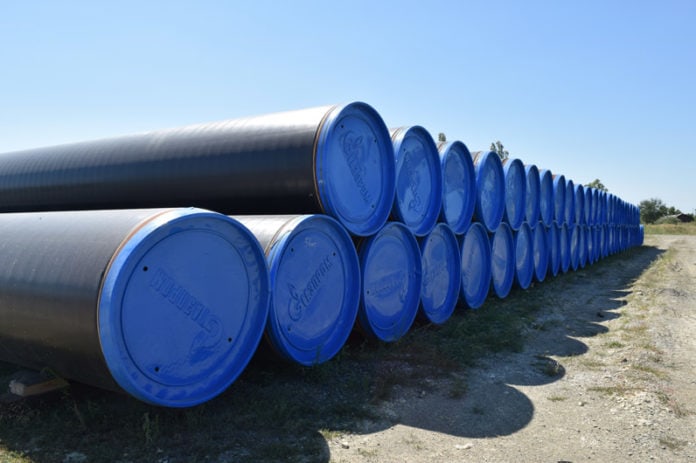Most oil and gas wells have some type of casing that is used to prevent hole collapse, allow more well control and isolate high and low-pressure zones.
The casing is just a metal pipe that comes in different sizes, thicknesses, and strengths.
Higher-pressure wells usually require thicker higher grade casing to prevent well collapse.
Types of Casing Used in Drilling
Conductor Casing – this is the first casing that is installed in the well. It is usually pretty short (<100 m) and is used to prevent the hole from collapsing and prevent well fluids from mixing with groundwater. It is also used to secure the casing head which is an adaptor used to attach the blowout preventer stack to the casing.
Surface Casing – surface casing is much longer than the conductor casing and it is the next casing that is run in the well during drilling operations. It is used for well control and to prevent well fluids from going into aquifers.
Intermediate Casing – if there are any abnormal pressure zones in the well, an intermediate casing is installed to prevent well kicks or fluid losses.
Production Casing – after the wells are drilled to the target depth, a production casing is installed. It is used to provide isolation between the well fluids and a formation.
Liner – the difference between the casing and the liner is that the liner doesn’t extend all the way to the surface. Liners are usually used to decrease costs and are attached to the end of the casing instead of the wellhead. Sometimes tiebacks of the same diameter as a liner are used to provide a path for fluids to flow from the liner to the surface.
The casing is usually cemented in the well to give it more stability and to prevent hydrocarbons from flowing along the outside diameter of the casing.
Conductor casing has the largest diameter size and is often around 10″ while production casing is usually around 4.5″ or 5.5″.
Often in addition to the casing and liner, production tubing is installed as well.
Production tubing helps to prevent casing damage due to contact with production fluids and makes it easy to produce the well from any specific zone.
When required, production tubing can be easily pulled out of the well with a help of a service rig or snubbing unit while the casing cannot be pulled out and replaced.
In most cases, production tubing is between 2″ and 3″ in diameter.
Read next: What Are Bridge Plugs In Oil And Gas?
